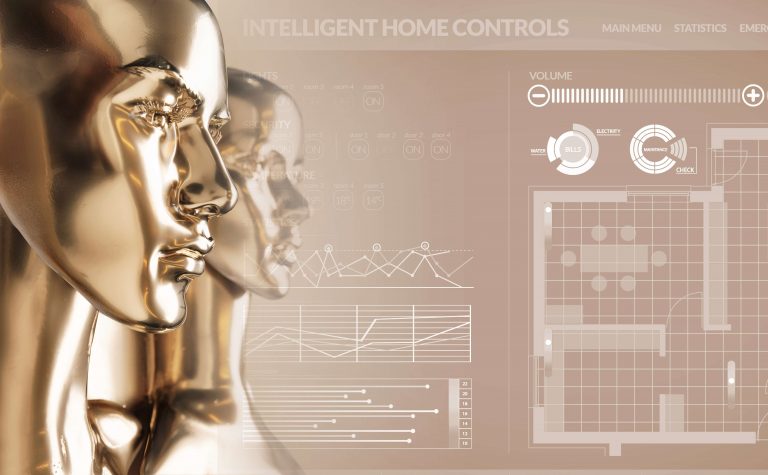Conduct a conversation on employee engagement and retention.
This conversation needs to start with a statement that I think most leaders are beginning to understand completely: It has long been recognized and acknowledged that organisations dedicated to fostering the growth and happiness of their employees are bound to see remarkable strides in growth and productivity.
Conversely, those organisations that neglect to actively cultivate these crucial factors expose themselves to an unforeseeable decline in both growth and productivity.
Even so, there is a distinct possibility that discussions and ideas on building culture, engagement, and retention feel endless to you. In simple words, I believe that we need to start a chain of happiness that constantly runs full circle – from employees, to clients, to the bottom line of the organization. The only catch is that the organisation and its people must be the energy of this circle.
To foster a thriving work culture that helps engage and retain employees, it is essential to implement strategies that empower employees, promote a positive environment, and encourage teamwork. Companies with a highly engaged workforce do not simply do this once. They make an ongoing commitment to their employees’ satisfaction by regularly assessing employee engagement.
I get that we cannot entirely rely on sources of data that are not diversified and have a small sample size. However, we can build upon the theories and case studies available to us, we can listen to our teams, focus on improving fundamental functions, and implement inspiring ideas.
A good employee engagement plan comprises identifying existing challenges, collaborating with employees to develop solutions, and then implementing changes to improve employee happiness.
Identify existing challenges
The initial step in developing an employee engagement plan involves identifying the existing challenges that hinder employee satisfaction and retention. It is imperative to know what the challenges can be and how to identify them.
For instance, collecting feedback through surveys at various stages of an employee’s journey (possibly seven days after joining, 30 days after joining, and post probation or on a quarterly basis) will help uncover these challenges and provide valuable insights.
Those insights then need to be acted upon. Targeted feedback mechanisms help massively when carried out efficiently. In any organisation – no matter the size – different teams run essential functions of the organisation.
It only makes sense to ask them solutions for what needs to be improved, and then, based on the data analysis, provide them with the necessary tools, resources, or systems to implement those solutions.
Ideally, we should create different platforms and avenues for employees to register their opinions about the workings of the organisation. It is important to develop various feedback mechanisms for the employees so that they can choose to communicate in a way that is comfortable to them.
Personally, I think what is even more important than comfort is transparency and respect. The variety in feedback channels enables organisations to analyse the consistency of thought and filters the ‘reluctance’ in what employees want to communicate. Thereby, you will know what exactly are the pain points that you need to address and solve.
What we need to understand is this – the work culture up until now has built walls between employees and employers/supervisors. Almost no employee wants to risk looking bad in front of an organisation. This is an obscure fear in many employees that is detrimental for the growth of both the employee and the organisation. Those walls need to be brought down.
Build cameraderie
What needs to be built is camaraderie. We are constantly coming across more and more stories about supervisors and/or organisations unjustly treating employees. My team and I are working to increase engagement and happiness indexes of many organisations, and from my vantage point, I think these stories coming out are both good and bad.
We all know why it is bad. However, it is good that these stories are coming out because they have been under wraps, even buried, for far too long. Not only do we know how toxic our work-culture has shaped up to this point, but it is also good that these stories are coming out because we now know that someone in every corner is standing up and fighting.
It is endearing to know that they have got the support they deserve, from a lot of people online.
Now what employers need to take stock of is to see how far back they are in terms of ensuring employee well-being. There are innumerable options to ensure that people can feel at peace when they work. All we need to do is look closely at the fundamentals of employment from an employee point of view.
What do employees want?
They essentially want career development and growth opportunities, competitive compensation and a decent benefits package, rewards, and recognition for the work they put in, work-life balance, open and transparent communication, strong leadership and managerial support, involvement in team-building and decision making, and a little bit of autonomy.
That is all. That is essentially what we all want, employees or employers. As a consultant in the work culture space, we call this the ‘ people first to deliver customer first philosophy’. In fact, I want to appeal to fellow leaders to reach out if they are facing difficulty in fulfilling things that are completely under their control. I will briefly elaborate on each aspect to make my point.
You can provide career development and growth opportunities by clearly communicating the organisation’s mission, vision, and values, to foster a sense of purpose and alignment among employees, ensuring they understand how their roles contribute to these goals.
Transparent and open communication channels ensure that employees feel valued, heard, and well-informed about organisational changes, updates, and opportunities for professional growth.
Consistent communication also helps avoid monotony, opens spaces for upskilling, keeps work interesting, and the individuals motivated. You will be surprised to see how many employees create opportunities for themselves – opportunities that are aligned with organisational goals – when communication channels are clear, consistent, and open.
Competitive compensation is a no-brainer, really. Fair compensation and necessary benefits attract and retain talent. As employers, it is our responsibility to be fair, and not go fighting toe-to-toe for every penny against people who work ‘with’ us.
This is a direct metric for retention. Add mental and physical health benefits, retirement plans, flexible work arrangements, parental benefits, maternity, and paternity benefits etc. to really create an enticing proposition for new and existing employees.
Additionally, recognise the above and beyond effort by employees. Regularly acknowledge and reward employees for their achievements and contributions, whether through formal recognition programs or simple gestures of appreciation. What also helps in recognition is a healthy competition.
However, healthy competition needs to be carefully nurtured. Encourage collaboration, knowledge-sharing, and provide opportunities for cross-functional projects and teamwork. This allows employees to learn from one another and leverage diverse perspectives.
For a good work-life balance, I have two major words that put the perspective in place – discourage presenteeism. It is something to think about. Encourage vacation/time-outs, promote a healthy work-life balance to help prevent burnout and maintain employee well-being.
Furthermore, to prevent burnout, increase participation. It is ironic, but it works. Provide professional development opportunities such as access to learning and development programs, workshops, and mentorship, and enable employees to acquire new skills and knowledge.
Implement policies that support flexible work arrangements, wellness programs, and create avenues for employees to recognize and appreciate their peers. This automatically gives an impression of strong and composed leadership.
As an employer, if you don’t know this already, know it now that people seldom leave an organisation. Mostly, they leave the manager/supervisor. That is why strong, composed, and effective leadership makes a difference. Establish regular pulse reports, surveys, feedback mechanisms, and mentorship programs for the teams.
Create individual development plans, offer learning opportunities, and support employees’ career aspirations by providing avenues for promotions, lateral moves, or cross-functional assignments.
Finally, creating a culture of autonomy and involving employees in decision-making responsibilities will exponentially increase the sense of ownership and lead individuals to make valuable contributions to the organisation’s success. Autonomy empowers employees. When people know that they are responsible and essential for the functioning of the organisation, their desire to deliver better work substantially improves.
One of the goals of any employer should be to get everyone in the organisation to work for the same purpose and when employees know that their decisions are impacting the organisation positively, we can get closer and closer to that goal.
In conclusion
It is our responsibility to be proactive in nurturing an environment where employee development and well-being are paramount, for it is through these intentional efforts that we can secure a future of sustainable success and prosperity for our organisation.
Creating a work culture that prioritises employee engagement and retention requires a multifaceted approach. Investing in building work culture and retention not only leads to higher productivity and improved organisational outcomes but also strengthens the overall reputation and success of the company.
Asif Upadhye is a director at Never Grow Up, based in Mumbai, Maharashtra, India.
















